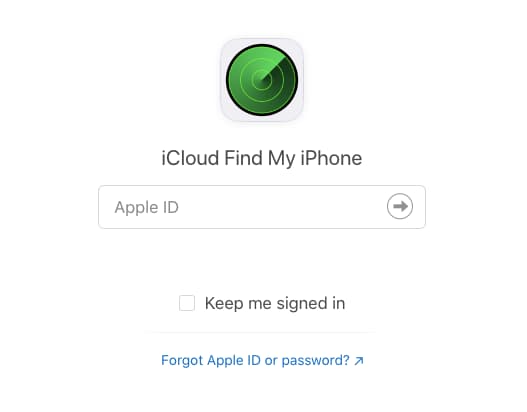App development is as broad as it is long. It comes in various shapes and sizes and has multiple interchangeable steps. As such, a newbie in the app development industry might find it a challenging field to navigate and struggle throughout the process – from ideation and market research to testing and promotion.
Fortunately, this handy guide details the basic phases of developing an app, digesting the process into manageable stages that even beginners should find simpler and perhaps more helpful than long, jargon-laden text monoliths written for experts.
If you’re interested in creating your very own app – no matter the niche, service, or end goal – here are ten basic steps you need to consider before diving into the task while wearing a blindfold.
Know Your Audience
You must understand your audience before you can design an app. You need to understand your audience’s needs and what services or solutions they expect from your app. How can you deliver what consumers need if you don’t even know what they need?
Look into their spending habits, their frequency of app use, what apps they already use, and what these apps offer. Then, ask yourself, how does your app idea fit into their daily lives?
Define the Service
Once you’ve fathomed your audience’s needs, you can then define what your app will offer. For instance, will your audience enjoy an e-commerce app that sells certain products (or a variety)? Or would they prefer something more akin to social media? How about a gaming app?
Myriads of app niches exist – but which will benefit your target audience? For inspiration, here are a few highly useful app ideas from a business perspective:
- A mobile e-commerce app is ideal for sales
- A mobile chatbot app works wonders for customer service
- A time management app is useful in the modern day for businesses and personal use
- Order tracking apps are superb for helping clients receive payment
Select and Register Your .app Domain
You’ll need a powerful and secure domain designed for apps – which is where the .app domain comes in. Recommended for app developers, app business owners, and app hobbyists alike, these entirely new domains are specifically designed for app-based businesses. They’re particularly aimed at start-ups, programmers, and developers intending to broadcast their apps to a wider audience.
A website with an .app domain also creates a focal point contact center for users of mobile applications, enhancing seamless usability for your audience as well.
Conduct Competitive Market Research
Most apps have competitors; even the most popular have similar counterparts vying for business – and it’s likely you’ll have competition, too.
Market research is crucial if you want to develop and market an app more successfully than your rivals. Knowing what the competition is up to is vital – and there are several questions to ask yourself when undertaking market research for app development:
- What does your app offer?
- What features will your app provide?
- Who is your target audience?
- How will your app earn money?
- What’s the budget for the entire project – from development to post-launch operation?
Answer these questions, and start scrolling through the App Store and Google Play to check out the competition. Seeing what those you’re competing against are doing will help you understand how you can do a better job with your app project and attract users.
Calculate Your Budget
Figure out your budget, how much it’ll cost to develop the app, and the funds needed for marketing and promotion. Note that the marketing budget usually surpasses development costs – so budget wisely!
Additionally, you must calculate how much money you’ll earn from the app. That way, you may be able to offset some initial costs with accurate profit projections.
Whatever the case, determining the app development cost beforehand is necessary because creating the business model is the next step – bringing further expenses into the plan. Afterward, you’ll choose a revenue plan, which enables your finished app to operate after development and launch.
Choose Native or Cross-Platform Development
Native development means a developer makes apps for one operating system (OS) and its features, such as an iOS version and a separate one for Android.
In contrast, cross-platform development permits the app to run on both operating systems without needing variants created for each.
Develop and Test
Testing the app during development is the key to ensuring it works and is ready to launch. Many developers test apps themselves – but one of the best (and unbiased) ways is to utilize testing platforms, which enable you to create a series of tests and send them to testers for feedback. The feedback then helps you make improvements before the launch.
Platforms like Google Test Lab and App Throwing are ideal for testing apps via various devices and operating systems.
Test the UX and UI via an Alpha Testing
Alpha testing is the initial stage of UX and UI evaluation and involves just a small number of users – typically family and friends of the app owner or developer. It helps examine the technical elements of the app, catch any bugs, and produces a foundational user base for future testing.
Test the UX and UI via a Beta Testing Group
Beta testing is next and is more formal, taking place within a limited audience comprising different social groups. It helps determine app stability, discovers remaining bugs, and facilities usability feedback. It’s also great for exposure – promoting an app before its release.
What’s more, beta testing offers developers an initial insight into the UX or UI of the app, revealing any issues with user-friendliness.
Promote the App
Post-launch app promotion comes in numerous formats. First, it’s important to have up-to-date information about your app – everything must be relevant and accurate; otherwise, you risk misinforming users and your app not meeting users’ expectations.
You’ll also need snappy call-to-actions (CTAs) on your app store page; this encourages people to download the app immediately rather than browsing and clicking the download button later.
Other effective ways of promoting your app are social media posts, banners, and promotional materials across popular channels – particularly platforms your target audience uses – from Twitter and Facebook to Instagram and Youtube.
Depending on your audience, your app might also benefit from influencer marketing – something to consider if any influencers with large followings operate within your app’s niche. The latter is also excellent for getting people excited about downloading your app – which is the goal of promotion.



